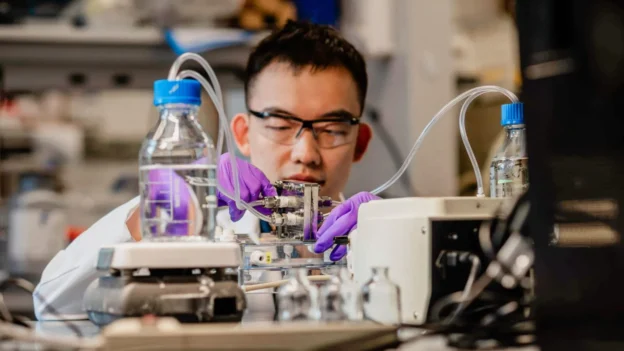The production of green hydrogen has just taken a strategic turn thanks to a team of Princeton University researchers who demonstrated that treated wastewater can replace ultrapure water in the electrolysis process, significantly reducing the operating and energy costs of this energy carrier. The research, published in the journal Water Researchreveals that this method could reduce the cost of water treatment by up to 47% and the associated energy consumption by 62%.
Dirty water, clean results
The green hydrogen is produced from water and renewable electricity by electrolysis, where an electric current separates water into oxygen and hydrogen. Traditionally, this system requires ultrapure water to avoid damaging the electrolyzer membranes, a requirement that raises the cost and complexity of the process.
The team led by Z. Jason Ren, professor of Civil and Environmental Engineering at Princeton, decided to explore whether reclaimed wastewater, typically used in irrigation or industrial cooling, could serve as an alternative source.
Instead of investing in expensive purification processes, the researchers applied a simple acid treatment with sulfuric acid, which allowed the protons present in the acid buffer to compete effectively with the calcium and magnesium ions. These ions, responsible for failures in previous attempts, no longer adhere to the electrolyzer membrane, and the system can operate stably for more than 300 hours.
The benefits
Among the main benefits of the discovery is that:
- Saves drinking water: Releases a vital resource for human consumption.
- It takes advantage of an underutilized resource: It uses the wastewater that cities already produce, creating a “circular economy”.
- It’s easier to implement: Almost any city has a wastewater treatment plant. wastewater treatment plant, which would facilitate the installation of green hydrogen plants in many places.This would facilitate the installation of green hydrogen plants in many places.
Towards the industrialization of the solution
The team is currently working with industrial partners to scale up this method and evaluate its performance with pretreated seawater, which could open the door to new applications in coastal regions. In addition, they have already conducted previous studies to identify the best locations in the U.S. to site hydrogen plants next to wastewater treatment facilities.
Source: Princeton University

